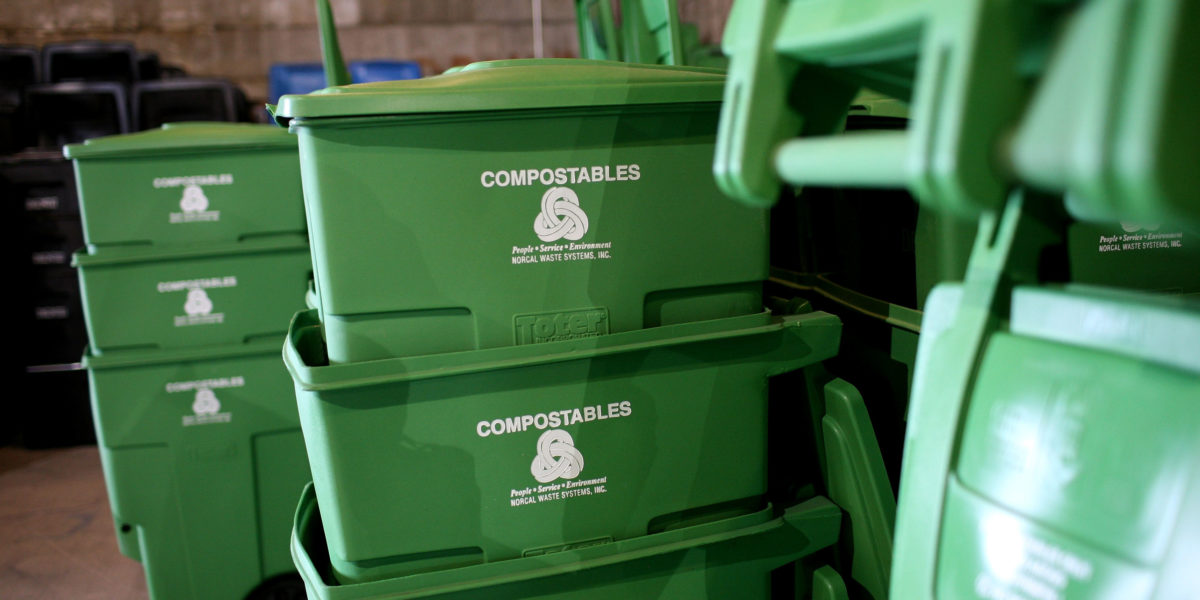
Your Guide to Recycling and Composting
In a time where waste levels continue to rise and garbage pollution is growing increasingly worrisome, here are important tips on recycling and composting at home

What Can I Recycle?
Items that are recyclable include metals, paper and cardboard, glass, plastics, batteries, light bulbs, and electronics. Although all of these items can be recycled, that doesn’t mean they can be in the same way.
Recycling Plastics
Plastics can be especially tricky to recycle and although most plastics have the distinguished “chasing arrows” symbol on them, it doesn’t mean they can all can be recycled. The number (ranging from 1-7) inside the symbol is what tells us if it can be recycled and how. Here’s what each number denotes.
- Polyethylene terephthalate, PETE, or PET represents plastics such as soft drink bottles, fruit juice containers, or cooking oil canisters. It is the most commonly used plastic in consumer products and is found in most water bottles. Products made of PET should be recycled but not reused.
- High-Density Polyethylene or HDPE are plastics used for such substances as milk, cleaning agents, laundry detergents, and shampoo. HDPE is considered the safest form of plastic and has a simple and cost-effective recycling process. HDPE is reusable and recyclable.
- Polyvinyl Chloride or PVC are plastics such as trays for sweets and fruits and bubble packing foil. It is soft, flexible plastic and commonly used as the sheathing material for cables. It is poisonous if ingested and is not recyclable.
- Low-Density Polyethylene or LDPE is found in crushed bottles and shopping bags. Although LDPE plastic is reusable, it is not always recyclable. You need to check your local collection service to see if they are accepting LDPE products for recycling.
- Polypropylene or PP represents plastics such as furniture, luggage, toys, and bumpers. This is the plastic that serves as a barrier against moisture, grease, and chemicals. It is considered safe for reuse, but you should check your local collection service to see if they are accepting PP for recycling.
- Polystyrene or PS represents plastics such as toys, refrigerator trays, cosmetic bags, and styrofoam vending cups. Recycling is not widely accepted across the U.S. for this product and it takes up about 35% of U.S. landfill material.
- Number 7 (Other) are plastics that incorporate acrylic, polycarbonate, polylactic fibers, nylon, and fiberglass. These plastics are used to make sippy cups, water coolers, and car parts. Unless they have the PLA compostable coding, they are not acceptable for reuse. If possible, it is best to avoid #7 plastics, especially in conjunction with food.
What Is Composting?
Composting is the process that puts organic waste to alternative use. The waste is combined with air and water to start the biological decomposition process. Some cities collect composted materials from residences and aggregate it in a facility, where the food scraps get turned into a high-quality soil amendment or fertilizer to aid further food cultivation.
Composting for Home Gardens
Composting is one of the best ways to reduce your environmental footprint and eliminate personal waste. To begin composting for your garden, get a container such as a tin can or a ceramic canister and begin in your kitchen with items that are expired.
Compile fruit and vegetable scraps, as well as egg shells, coffee grounds, dry leaves, newspapers, grass and plant clippings, finely chopped wood, bark chips, and straw. You’ll want to avoid anything containing meat, oil, fat, grease, pet droppings, dairy products, and diseased plant material (these items will make your compost smell bad and attract animals); you can instead dispose of these in your city green composting bin.
The fastest type of compost is a hot turn pile, which is ready within 3 weeks. This is at least a 3×3-foot pile, which you should rotate every day for a week and then every other day for 12 days. After that time, the compost is ready to be used as fertilizer in your garden soil.
